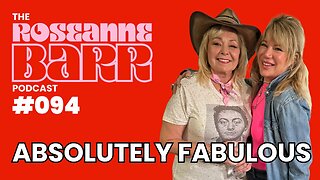Premium Only Content

Budgeting Techniques And Strategies
Budgeting is a critical financial management skill that helps individuals and households plan, track, and control their expenses and income. There are various budgeting techniques and strategies to choose from, depending on your preferences and financial goals. Here are some popular budgeting techniques and strategies:
Traditional or Zero-Based Budgeting:
In traditional budgeting, you allocate specific amounts to different spending categories each month.
Zero-based budgeting requires that every dollar of income is assigned a purpose, with the goal of "zeroing out" the budget by the end of the month. This means you allocate every dollar to an expense, savings, or debt repayment.
Envelope System:
This technique involves using cash for various spending categories, such as groceries, entertainment, and dining out.
Place the allocated cash for each category in separate envelopes. When an envelope is empty, you can't spend more in that category until the next budgeting period.
Percentage-Based Budgeting:
Allocate a specific percentage of your income to different spending categories. For example, you might allocate 50% to necessities, 30% to wants, and 20% to savings and debt repayment.
Adjust the percentages based on your financial goals and priorities.
50/30/20 Budget:
A simplified variation of percentage-based budgeting, where 50% of your income goes to needs (essential expenses), 30% to wants (non-essential spending), and 20% to savings and debt repayment.
Cash-Only Budget:
Use cash for all your expenses, excluding fixed bills like rent or mortgage payments.
This approach helps you avoid overspending because once you've spent all the cash you've allocated for a category, you can't spend more until the next budgeting period.
Digital Budgeting Apps and Tools:
Many budgeting apps and software platforms, such as Mint, YNAB (You Need a Budget), and Personal Capital, help you create and track your budget online.
These tools can automate expense tracking, provide real-time updates on your financial situation, and offer insights into your spending habits.
Pay Yourself First:
Allocate a portion of your income directly to savings and investments as soon as you receive your paycheck.
This technique ensures that your savings goals are prioritized, and you adjust your spending accordingly.
Biweekly or Weekly Budgeting:
Instead of creating a monthly budget, budget on a shorter time frame that aligns with your income schedule (e.g., biweekly or weekly).
This can help you manage your money more effectively and avoid running out of funds before the end of the month.
Emergency Fund First:
Before allocating money to other expenses, prioritize building and maintaining an emergency fund. This fund acts as a financial safety net for unexpected expenses.
Rolling Budget:
In a rolling budget, any unspent money from one month is carried over to the next month's budget. This can be useful for irregular expenses or fluctuating income.
The key to successful budgeting is finding a method that aligns with your financial goals, lifestyle, and preferences. Regularly track your spending, review your budget, and make adjustments as needed to stay on track and achieve your financial objectives. Additionally, it's essential to be flexible and adapt your budget as your financial situation changes over time.
-
 1:09:37
1:09:37
IsaacButterfield
13 hours ago $17.72 earnedSteve Irwin's Son BREAKS THE INTERNET | TRANS Athletes Make A Come Back | The World Turns on TRUMP!
39K65 -
 2:02:36
2:02:36
Badlands Media
1 day agoThe Liberty Den Ep. 138
110K53 -
 3:21:57
3:21:57
I_Came_With_Fire_Podcast
20 hours agoCHINA CENSORED AMERICANS | NO PRAYER DOWN UNDER | SAVE ACT
73K14 -
 1:26:01
1:26:01
Roseanne Barr
16 hours ago $27.85 earnedAbsolutely Fabulous W/ Shannon Hughey #94
114K27 -
 8:00:05
8:00:05
SpartakusLIVE
14 hours agoDuos w/ Nicky || Friday Night HYPE
15.1K -
 2:06:42
2:06:42
TimcastIRL
12 hours agoPolice ARREST "MR SATAN" For Threatening To ASSASSINATE Trump, KILL ICE Agents | Timcast IRL
245K264 -
 8:12:48
8:12:48
XxXAztecwarrior
11 hours agoKilling Little Timmy's On Verdansk
78.8K3 -
 4:53:16
4:53:16
SynthTrax & DJ Cheezus Livestreams
1 day agoFriday Night Synthwave 80s 90s Electronica and more DJ MIX Livestream THE NEW MODEL - Variety Edition
64.5K10 -
 LIVE
LIVE
Anthony Rogers
1 day agoAnthony Rogers Show - 24/7 Stream
312 watching -
 2:11:55
2:11:55
Total Horse Channel
21 hours ago2025 CMSA Extravaganza | Mounted Shooting
64.7K3